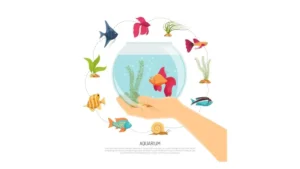GENERAL
Skate Fish: Mysterious Ocean Dwellers, Their Habitat, Diet, and Conservation Status

Skate fish are deep-sea mysteries. Too often, they play second fiddle to their stingray relatives. These interesting bottom-dwellers cruise across the sea floor. Silent as can be, they glide across the seabed like a ghost. They inhabit oceans all over the globe, with an important part in ocean ecosystems. But that’s the rub—most don’t know a whole lot about them. Some even mistake them for rays! Why? Because both are flat and have wing-like fins. But unlike rays, skate fish don’t have venomous spines. Instead, they lay egg cases called “mermaid’s purses.” That’s just the beginning. Their habitat, diet, and conservation status reveal even more secrets. Dive in. Explore the hidden world of skate fish. You’ll never see the ocean the same way again.
What Are Skate Fish?
Skate fish are members of the Rajidae family. They’re cartilaginous fish, so their skeletons aren’t bone but flexible cartilage. Awesome, huh? That makes them more shark-like than ordinary fish. They have flat bodies, long snouts, and broad pectoral fins that enable them to “fly” underwater. Skate fish differ from rays in that they have a thicker, more rigid tail and no venomous barbs. Most individuals confuse them with stingrays, but they spawn differently. They do not give birth to live young like stingrays. Skate fish lay eggs. Their egg cases wash up on the beach, and they are discovered by beachcombers. They’re resilient survivors of the deep ocean. Want to learn more? Their diversity of species, range of sizes, and distinctive features make them all the more intriguing.
Types of Skate Fish
Not all skate fish are created equal. Some are small, only a foot or so long. Others? Gigantic. The big skate (Beringraja binoculata) reaches more than 8 feet in width! Thorny skates, with spiny, rough skin, are resilient deep-sea creatures. The little skate is found in shallow waters. Various species live in various habitats, ranging from sandy beaches to icy depths. But the problem is—some species are threatened. Overfishing has driven the common skate to the brink of extinction in some areas. That’s why knowing about skate fish diversity is important. All species contribute to ocean health. Saving them is not just a matter of rescuing one fish. It’s a matter of preserving the balance of life in the ocean.
Natural Habitat and Distribution
Skate fish are true ocean wanderers. Some prefer shallow coastal waters, while others lurk in the deep sea. You won’t find them in freshwater—these creatures stick to saltwater environments. Cold, temperate waters are their favorites, but they’re everywhere—from the North Atlantic to the Pacific depths. The seafloor is their home. They bury themselves in the sand, waiting to ambush prey. Think of them as ocean ninjas, masters of disguise. Some species migrate seasonally, while others stay put. Climate change is messing with their world. Rising ocean temperatures affect where they can live and hunt. If their habitat shrinks, so do their chances of survival. That’s why protecting the ocean means protecting skate fish too.
Behavior and Lifestyle
Skate fish don’t rush. They glide, slow and deliberate, across the ocean floor. Patience is their game. They wait, motionless, hidden under the sand, before striking prey. It’s a silent hunt. Unlike schooling fish, skates prefer solitude. They’re nocturnal, most active when the sun disappears. Some species migrate short distances, following food sources. Others stay in one place, ruling their territory. Despite their calm nature, they’re survivors. Their rough, spiny skin protects them from predators. Some species even emit weak electric pulses to sense their surroundings. Smart, right? Skate fish may not be the flashiest ocean creatures, but their lifestyle is a masterclass in adaptation. They move with purpose. They live by instinct.
Diet and Feeding Habits
What do skate fish eat? Simple—whatever fits in their mouth. They aren’t picky eaters. Crustaceans, mollusks, small fish—if it moves on the ocean floor, it’s fair game. Skates use their powerful jaws to crush hard shells. Ever seen a crab vanish in seconds? That’s a skate fish at work. Their hunting strategy? Ambush. They stay buried in the sand, waiting for prey to come too close. Then—snap! Gone. Unlike sharks, they don’t chase down food. They let the ocean bring it to them. This diet keeps marine ecosystems balanced. But here’s the issue—overfishing disrupts their food chain. Less prey means fewer skates. And fewer skates? That spells trouble for the ocean’s balance.
Reproduction and Lifecycle
This fish don’t give birth like stingrays. They lay eggs, neatly packed in protective cases called “mermaid’s purses.” Ever found a strange, leathery pouch on the beach? That’s a skate egg case. Inside, a baby skate grows, safe from predators. This process takes months, sometimes over a year. Once hatched, young skates fend for themselves. No parental care, no guidance—just instinct. They start small but grow into stealthy ocean predators. Unlike fast-growing fish, skates take years to mature. That’s a problem. Slow reproduction means they can’t bounce back quickly from overfishing. If too many are caught, their numbers drop fast. That’s why skate fish conservation is critical. Their survival depends on responsible fishing.

Importance of Skate Fish in Marine Ecosystems
Skate fish aren’t just cool—they’re essential. As bottom-dwellers, they keep marine ecosystems in check. They control crustacean populations, preventing overgrowth. Their presence impacts the entire food web. Remove them, and things go wrong. Some predators, like sharks, rely on skates as food. If skates disappear, predator numbers shrink too. That’s how delicate ocean balance works. Unfortunately, human activities threaten this balance. Overfishing, habitat destruction, and pollution all put skate fish at risk. The ocean isn’t just water—it’s a living system. Every species matters. These fish their part. We need to protect them, not just for their sake, but for the health of our oceans.
Threats and Conservation Status
Skate fish are in trouble. Overfishing is a massive threat. Many end up as bycatch—caught accidentally in fishing nets. Others are targeted for food. Some species, like the common skate, are critically endangered. Their slow reproduction makes recovery difficult. Climate change adds another problem. Warming oceans shift their habitat, affecting food availability. Pollution? That’s another killer. Chemicals, plastics, and oil spills damage their environment. But there’s hope. Conservation programs aim to protect skate fish populations. Fishing regulations, marine protected areas, and awareness campaigns help. The key? Sustainable fishing practices. If we act now, skate fish still have a future. If we wait? They might not.
Skate Fish in Human Culture
Most people don’t think about skate fish. But in some cultures, they’re a delicacy. In Korea, fermented skate (hongeo) is famous for its strong ammonia smell. Some European countries also serve skate dishes. Fishermen often catch them by accident while targeting other species. But here’s the problem—demand for skate fish can lead to overfishing. Ethical concerns rise. Should we eat them if their populations are declining? The debate continues. Beyond food, ths fish appear in folklore. Some believe finding a mermaid’s purse brings good luck. Others see them as mysterious creatures of the deep. Whether on a plate or in legends, this fish have left their mark on human culture.
Fun and Lesser-Known Facts About Skate Fish
Did you know skate fish can “walk” on the ocean floor? They use their pelvic fins like tiny legs. Some species even glow in the dark! And here’s a wild fact—skates have electric sensors in their snouts. These help them detect prey in complete darkness. Another surprise? The largest skate species, the big skate, can weigh over 200 pounds! Some skates live over 20 years. And those “mermaid’s purses” you find on the beach? They’re tougher than they look, protecting baby skates for months.This fish may not be famous, but they’re full of surprises. The more you learn, the more fascinating they become.
Conclusion
Skate fish are more than just another ocean species. They’re survivors, hunters, and vital to marine ecosystems. But they’re at risk. Overfishing, habitat loss, and climate change threaten their existence. What can we do? Support sustainable seafood choices. Learn about conservation efforts. Spread awareness. Every action counts. The ocean needs balance, and skate fish play a key role. They’ve thrived for millions of years. Now, it’s our turn to ensure they continue to glide through the depths, undisturbed.
-

 BIOGRAPHY6 months ago
BIOGRAPHY6 months agoBehind the Scenes with Sandra Orlow: An Exclusive Interview
-

 HOME1 year ago
HOME1 year agoDiscovering Insights: A Deep Dive into the //vital-mag.net blog
-

 HOME1 year ago
HOME1 year agoSifangds in Action: Real-Life Applications and Success Stories
-

 BIOGRAPHY1 year ago
BIOGRAPHY1 year agoThe Woman Behind the Comedian: Meet Andrew Santino Wife




























